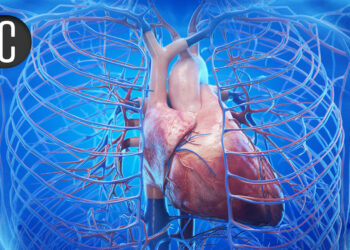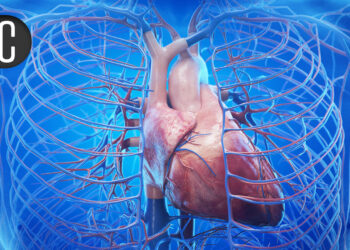Information on mobility, phone usage, sleep-wake patterns, and other passive data collected by smartphones is associated with behavioral markers linked to multiple forms of psychopathology, including general mental health burden, new research showed.
In a large observational study of community-based adults, researchers found that smartphone sensors that measure daily activities captured distinct behavioral signatures that may help identify when mental health symptoms are worsening.
The findings add to a growing body of work on digital phenotyping, which analyzes passive data collected by smartphones and wearables to identify behavioral patterns in real time.
Although not ready for the clinic, researchers said the new analysis suggests a number of potential applications for smartphone sensing, which could be used alongside clinician-rated and self-reported measures, offering moment-by-moment insight into patients’ lived experience and an opportunity for timely intervention.
“This study helps us understand the breadth of psychopathology that smartphone sensors can detect and how specific those markers are to different forms of mental illness,” lead author Whitney R. Ringwald, PhD, assistant professor and Starke Hathaway Endowed Chair in Clinical Psychology at the University of Minnesota, Minneapolis, told Medscape Medical News.
“It offers a way to assess psychological functioning in daily life and monitor mental health symptoms more continuously, especially outside the clinic setting,” she added.
The study was published online on July 3 in JAMA Network Open.
Linking Data to Symptoms
Until now, behavioral studies utilizing smartphone data were typically small and focused on a single disorder like depression or schizophrenia. But that approach may overlook how symptoms interact and overlap across diagnostic boundaries, researchers said.
To capture a fuller picture, Ringwald and colleagues used the hierarchical taxonomy of psychopathology, a framework that organizes mental health symptoms into transdiagnostic domains. These include internalizing, detachment, somatoform, antagonism, disinhibition, and thought disorder.
“One of the major contributions of the study is that earlier research has looked at only a few DSM [diagnostic and statistical manual of mental disorders] disorders,” Ringwald said. “We took a wider view by measuring symptom dimensions that span most forms of psychopathology and used a much larger sample.”
The cross-sectional study enrolled 557 adults (83% women; mean age, 30.7 years; 81% White individuals). Participants completed a baseline mental health survey, which investigators used to calculate a general measure of overall psychiatric symptom burden, called a p-factor.
They then underwent 15 days of smartphone-based monitoring. Their personal devices collected data via global positioning system (GPS), accelerometer, screen use, call logs, and battery metrics.
Researchers extracted 27 behavioral markers from the data, such as time spent at home (from GPS data) and sleep duration (from accelerometer data).
They then mapped these markers to participants’ scores across psychopathology domains, measuring the strength of the association by the coefficient of multiple correlation (R) between each of the six domains and the 27 markers.
Identifying Patterns
Detachment (R, 0.42; 95% CI, 0.29-0.54) and somatoform (R, 0.41; 95% CI, 0.30-0.53) symptoms showed the strongest associations. High detachment was linked to such behavioral markers as reduced walking, more time at home, and fewer locations visited.
Somatoform symptoms, which are often overlooked in mobile sensing studies, were similarly tied to low physical activity.
Other associations included low battery charge in individuals with high disinhibition — which researchers suggest may reflect planning deficits — and fewer, shorter phone calls among those with elevated antagonism. Internalizing symptoms had subtler links, including briefer, more frequent screen interactions.
The researchers also correlated behavioral patterns with participants’ baseline p-factor. Those with higher baseline p-factor scores were more likely to have sensor data that revealed reduced mobility (standardized β, -0.22; 95% CI, -0.32 to -0.12), later bedtimes (standardized β, 0.25; 95% CI, 0.11-0.38), more time spent at home (standardized β, 0.23; 95% CI, 0.14-0.32), and lower phone battery levels (standardized β, -0.16; 95% CI, -0.30 to -0.01).
These patterns, the authors suggest, may reflect shared impairments in motivation, planning, or cognitive control across multiple forms of mental illness. If validated, such behavioral indicators could help clinicians recognize when symptoms are escalating, even in the absence of a clear diagnostic label.
Digital Phenotyping: Another Clinical Tool?
Although not ready for clinical use, the findings point to several promising applications.
If integrated into care, smartphone sensing could help providers passively track symptoms that could indicate relapse, allowing clinicians to deliver timely interventions based on real-world behavior. This could be especially valuable for patients who struggle to report changes or have limited access to care, researchers said.
“It’s not a replacement for clinical care, but a potential complement that gives us a richer picture,” Ringwald said.
She noted that digital phenotyping could eventually support just-in-time interventions — for example, prompting a brief therapeutic strategy when a person shows signs of behavioral withdrawal or disruption.
Ringwald emphasized that important steps remain before the technology is ready to be implemented.
“This is still early-stage research,” she said. “We need larger, more diverse samples, better sensor calibration, and strategies for interpreting data at the individual level before we can integrate this into care.”
Promise and Precautions
In an accompanying editorial, Christian A. Webb, PhD, and Hadar Fisher, PhD, both of Harvard Medical School in Boston, described the study as “an important contribution to the growing field of digital phenotyping.”
The research “demonstrates the potential value of this approach, linking everyday behaviors to transdiagnostic symptom dimensions,” they wrote.
They cautioned, however, that behavioral data should not be overinterpreted.
“Digital behavioral data are just that — behavioral. They are rough proxies for internal mental states, not direct readouts of mood or thought,” the authors wrote.
A single signal could carry different meanings depending on context. “The same signal could reflect intense physical activity, fear, or excitement.”
To be clinically useful, they added, the technology must be accurate, scalable, and ethically implemented.
“The dream is scalable, low-burden, personalized care that meets people where they are,” Webb and Fisher wrote. “If we can get the science and safeguards right, smartphones may become not only ubiquitous in our pockets but also invaluable in our clinical toolkits.”
This study was supported by the National Institute on Alcohol Abuse and Alcoholism, the National Institute of Mental Health, and the University of Pittsburgh Clinical and Translational Science Institute. Ringwald and coauthors reported no relevant financial relationships. Webb was supported in part by the Tommy Fuss Fund and reported no relevant disclosures. Fisher reported no conflicts of interest.
Source link : https://www.medscape.com/viewarticle/smartphone-data-reveal-patterns-psychopathology-2025a1000iy0?src=rss
Author :
Publish date : 2025-07-17 09:32:00
Copyright for syndicated content belongs to the linked Source.











